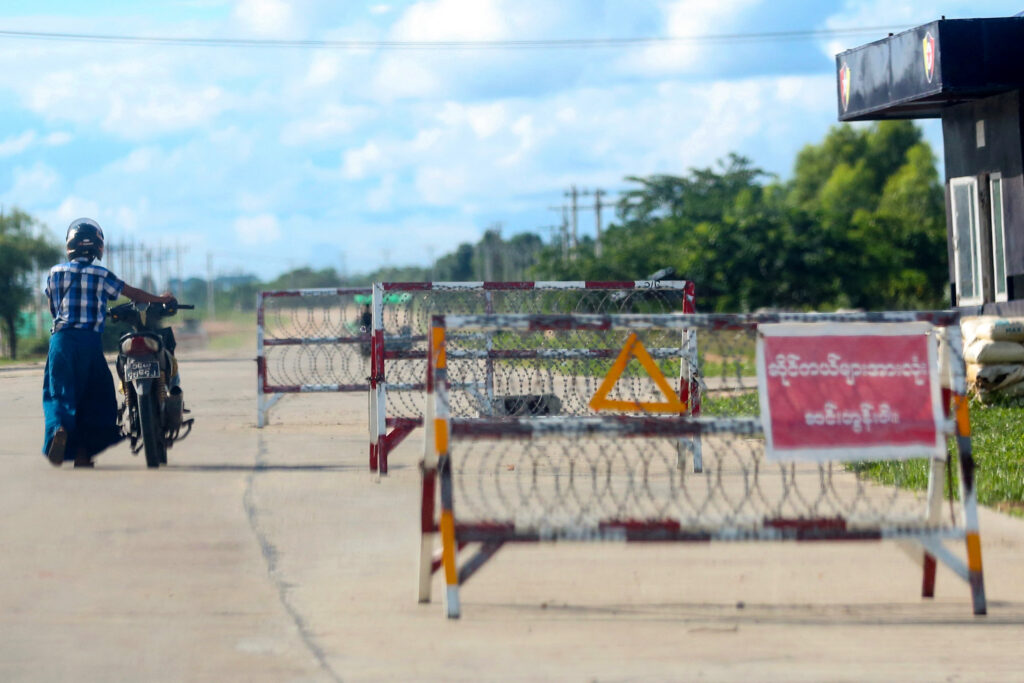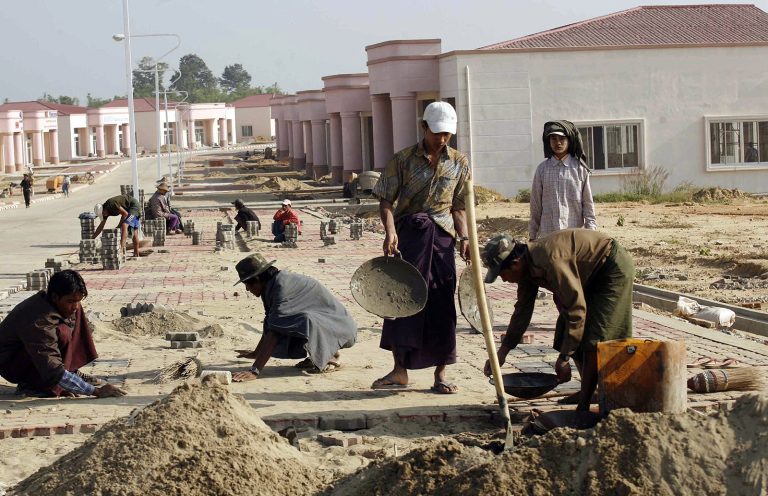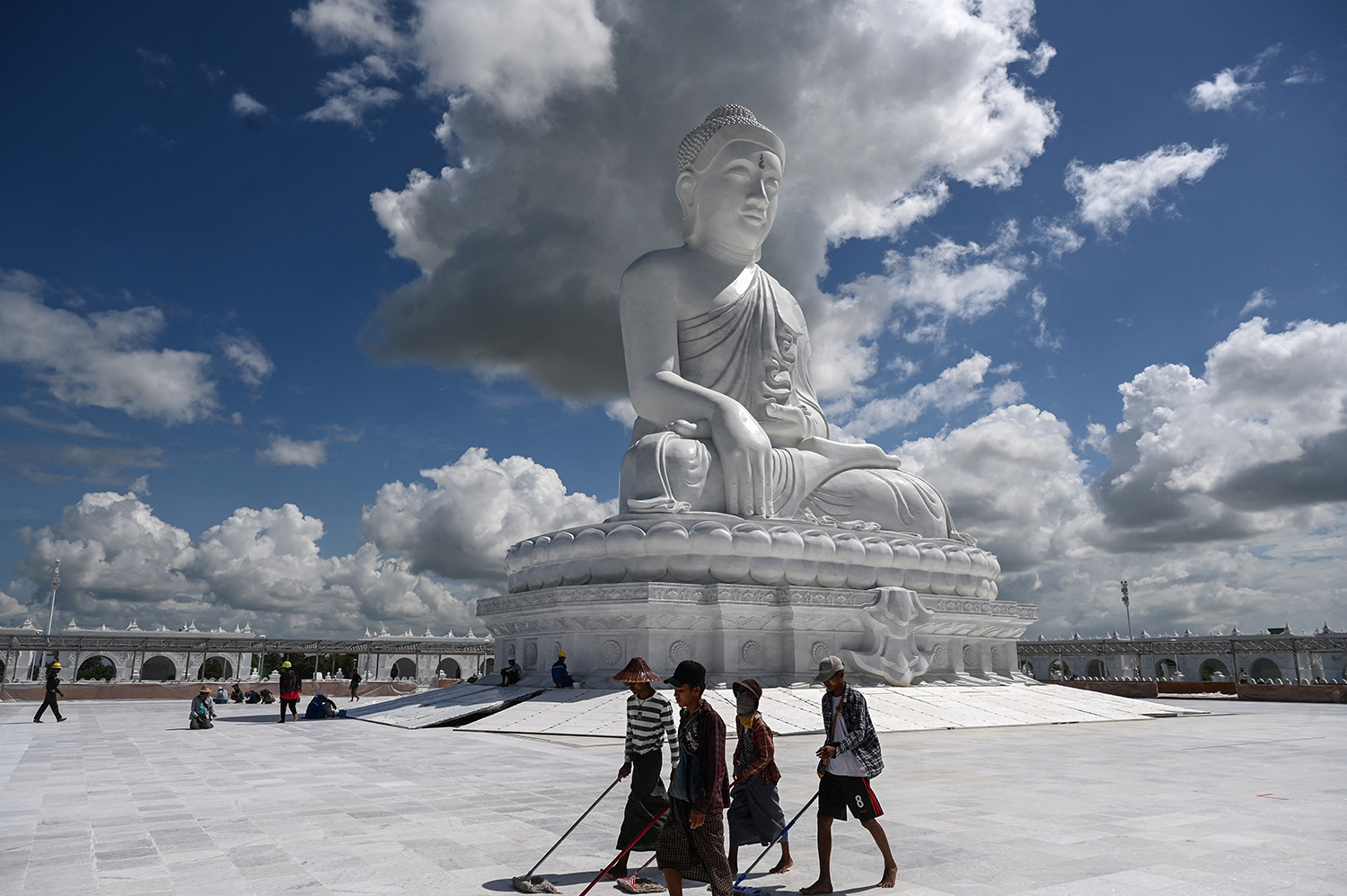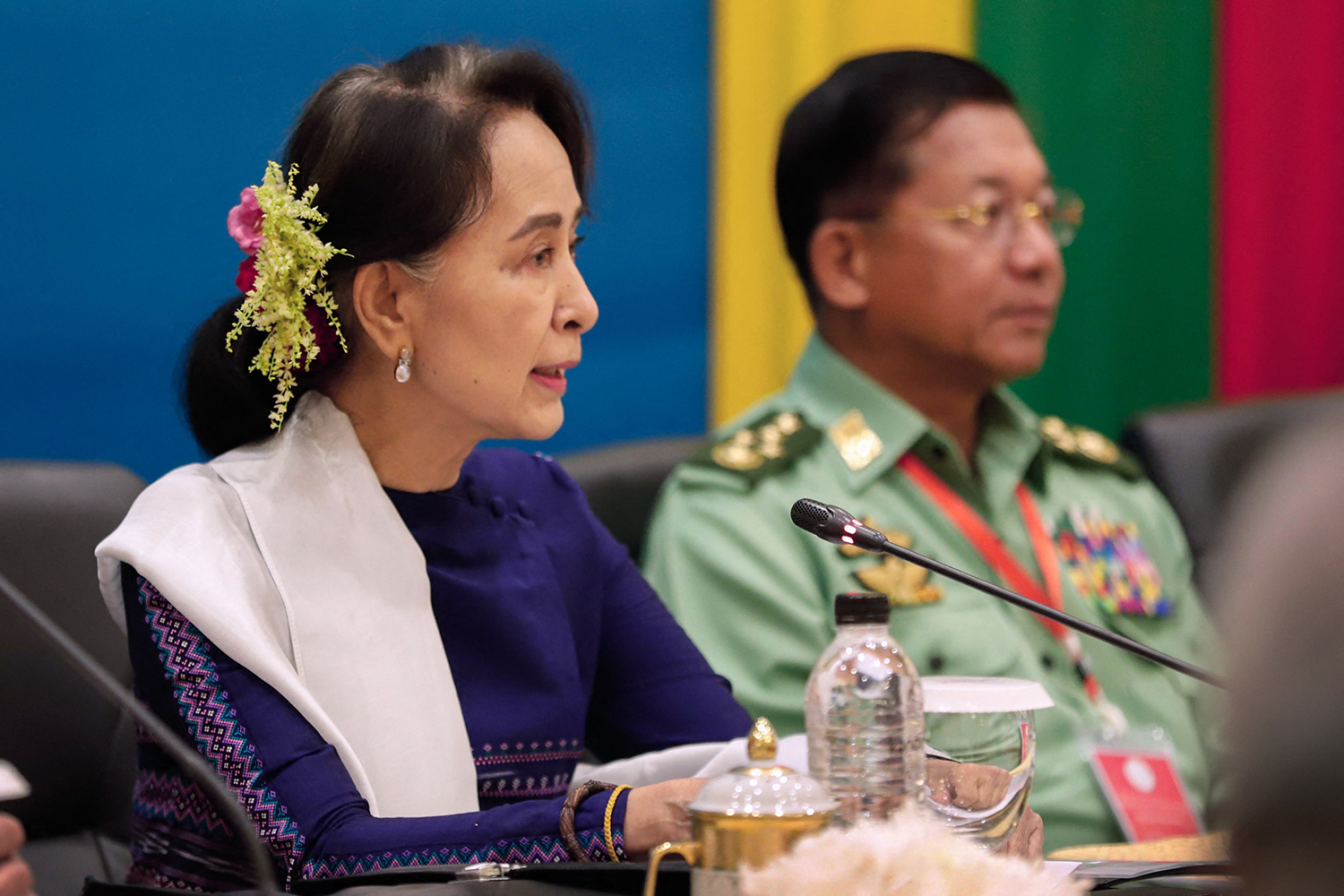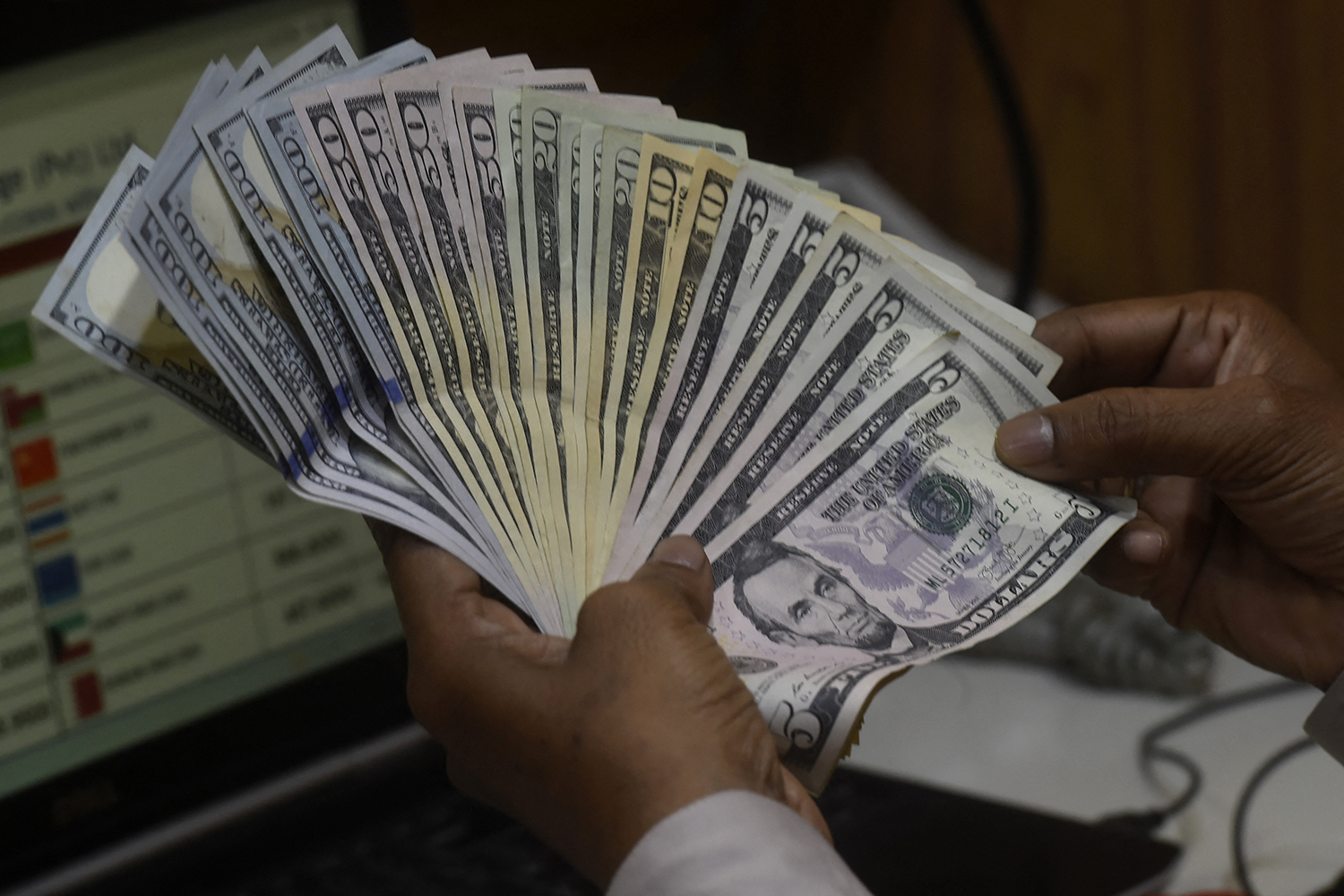As resolute resistance forces continue to find gaps in the military’s defences, the regime is tightening security in its capital city.
By FRONTIER
Fortified bunkers have sprouted up across Nay Pyi Taw in recent months under a ramped-up police presence.
From the tollgate on the city’s outskirts to the Gangawpan and Thabyegon roundabouts that straddle its centre there are now five police outposts, with two added last month.
Police posts were formerly protected only by sandbags but as an added precaution, presumably against bomb attacks, some are now also being covered by used car tyres.
Before the February 2021 coup, fortifications like these were rarely seen in Myanmar cities.
A resident of the capital’s Zabuthiri Township said, “The tight security in Nay Pyi Taw is to protect the military, not local people”, whose lives are only made harder. “The things they’ve put in place make us we feel we’re no longer free to move around,” he told Frontier.
“Nay Pyi Taw seemed more peaceful than other areas, but everything has become difficult since the coup; now I think it’s the same for people here as it is elsewhere,” he added.
Before the coup, the Ministry of Defence was guarded with a simple sentry box. Now, roadblocks fortified with sandbags and tyres obstruct the road leading to it. As with other key ministries, the old security guards have been brought inside the compound. In their place are newly constructed huts manned by heavily armed members of the security forces.
Security is especially tight at the entrances to the national police headquarters, the central bank and the ministries of home affairs and of natural resources and environmental conservation.
A civil servant at the Ministry of Agriculture, Livestock and Irrigation said visitors to the ministry “need to provide their [national ID] and car licence plate number in advance before they can enter the compound. It has been like this for two months,” he said.
In mid-September, barriers constructed with concrete blocks replaced barbed wire on Yaw Win Yadana Avenue in Pobbathiri Township. The road is known colloquially as the “row of six mansions” because it is the home of six retired generals, including former dictator U Than Shwe, former president U Thein Sein and former parliamentary speaker U Shwe Mann.
Meanwhile, in Pyinmana, the site of large protests after the coup, a resident said “bunkers have been placed at every junction leading out of [the township]”, although so far drivers and pedestrians have not been stopped at the accompanying checkpoints.
Conversely, since last month, vehicles have been checked on Yazathingaha Road – the capital’s main traffic artery with several malls and luxury hotels – by at least nine armed police.
“They even stop motorbikes and open the toolbox to check inside,” said a woman who uses the road every day, adding that these inspections were arbitrary and on some days didn’t happen at all.
The gradual tightening of security in the capital has included the imposition of curfews in eight of its townships under the emergency provisions contained in section 144 of the Criminal Procedure Code. The midnight to 4am curfew was imposed in Tatkon, Pyinmana, Zayarthiri, Lewe, Ottarathiri, and Dekkinathiri townships on September 17, and in Zabuthiri and Pobbathiri townships on October 2.
The emergency order also bans public gatherings of five or more people at any time.
In addition, unannounced night-time visits to homes by local administrators, police and soldiers to check for unregistered guests have become more frequent since early August, say residents of Zabuthiri, an area that hosts many rental properties and guesthouses.
However, Frontier was unable to verify rumours that the junta had begun conscripting residents to join new militias to defend the capital.
Sights set on the capital
The ramped-up security suggests the regime is bracing itself for a wave of resistance attacks. Political analyst U Than Soe Naing said the junta is preparing for the time when it will need to “defend Nay Pyi Taw with whatever forces they have at their disposal”.
However, despite gaining significant footholds elsewhere in the country, resistance groups have struggled to establish themselves in the capital. The city has instead become a haven for the Tatmadaw’s supporters and affiliates. A member of the Union Solidarity and Development Party told Frontier that boarding houses were hosting hundreds of party officials and dependent family members from parts of Myanmar where they felt unsafe.
The heavily garrisoned city was built as the nation’s new capital from 2002 onwards partly to protect the past junta from attacks, both external and domestic. Yet, since the coup, a number of resistance attacks have been recorded in the heart of the city.
On August 24, PDF fighters lobbed a grenade at police and soldiers guarding the Dekkhina District Court, in an attack that local media said left one policeman dead.
“With the bombing of the court, the PDFs triggered a red alert. The [junta] has tightened security in Nay Pyi Taw because it believes PDF operatives have already penetrated the capital,” a Nay Pyi Taw resident said.
The increased security measures reflect the regime’s growing insecurity “even in the centre of Nay Pyi Taw”, said Bo Ngwe Soe, a resistance fighter and information officer of the Nay Pyi Taw People’s Defence Force.
On September 30 last year, the Nay Pyi Taw PDF bombed an office of the military’s directorate of procurement. It has also claimed several attacks on checkpoints and convoys in outlying townships, such as Pyinmana, which the junta has denied.
“They are building bunkers downtown and have deployed snipers in the hills,” said Ngwe Soe. He believes these recent measures were inspired by a speech made by National Unity Government Acting President Duwa Lashi La to mark the first anniversary on September 7 of the declaration of a resistance war against the military.
Lashi La said in the speech that the junta was weakening in every aspect and a “final battle” to root out the military dictatorship was coming.
Ngwe Soe acknowledged that the heightened security had made it “more difficult for us to launch operations in Nay Pyi Taw” and “even to move about”.
“We are gathering strength and preparing for a time when we can launch attacks in Nay Pyi Taw again,” he said.
In the meantime, he said the Nay Pyi Taw PDF has been gaining “experience in combined operations” in an area of southern Shan State roughly 200 kilometres east of the capital.
The group has joined forces with other resistance groups battling junta forces for control of the strategic town of Moebye, which sits close to the Kayah State border in southern Shan’s Pekon Township. A fierce upsurge of fighting in Moebye last month, described in a recent Frontier feature, ended after several weeks in an uneasy stalemate.
“We are fighting in an alliance of forces from the highlands and those from the central plains are a forerunner of a future federal Tatmadaw,” Ngwe Soe said.
The PDF fighter believes his group and their new allies will turn their guns on the capital sooner rather than later.
“It’s more than 600 days since the coup. That security has had to be tightened in Nay Pyi Taw, when the people’s armed resistance has existed for only one year, is a sign of success,” said Ngwe Soe, who called on the public to keep supporting the resistance.
“We want to tell the people the junta’s end is near,” he said.


